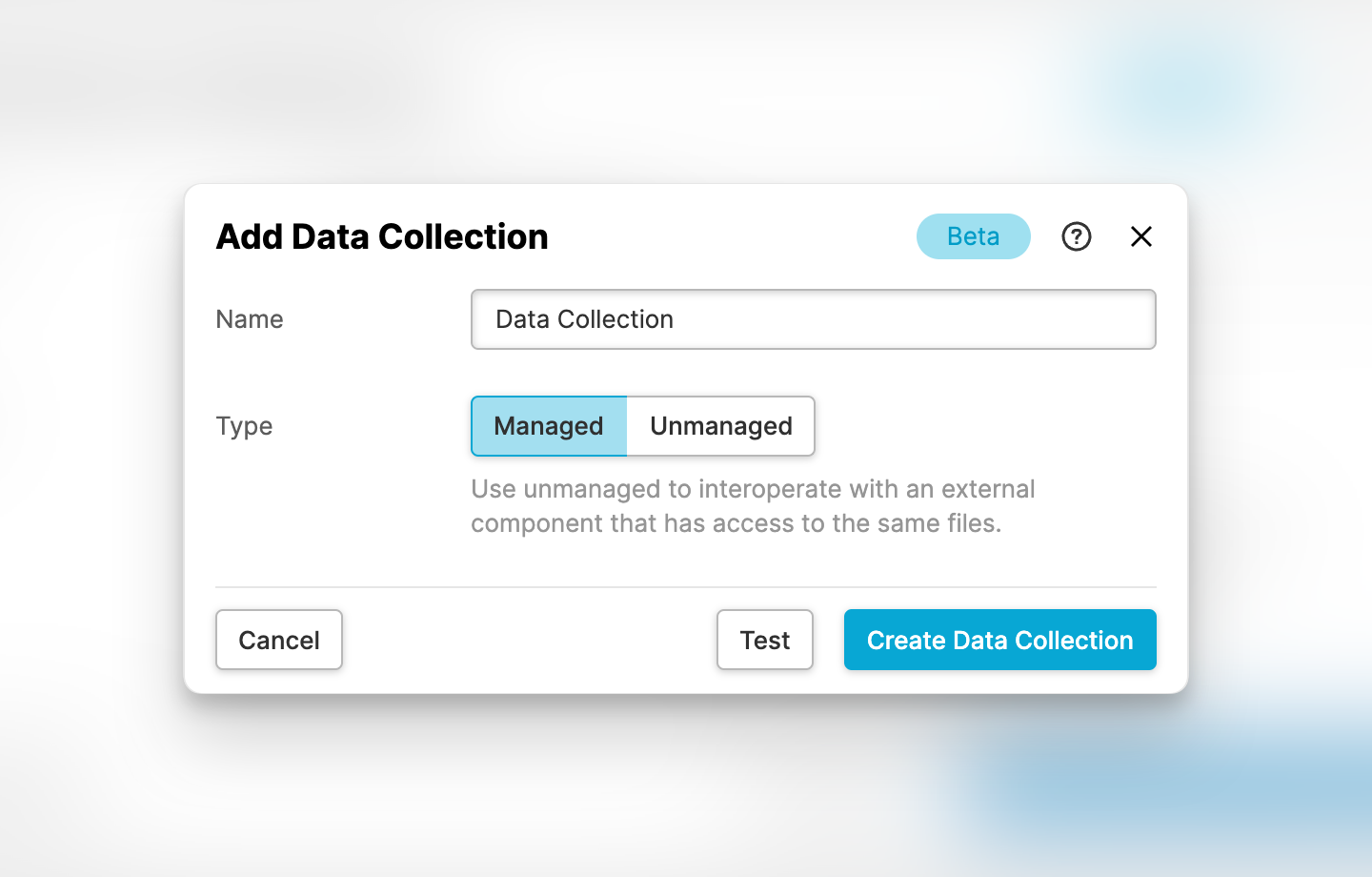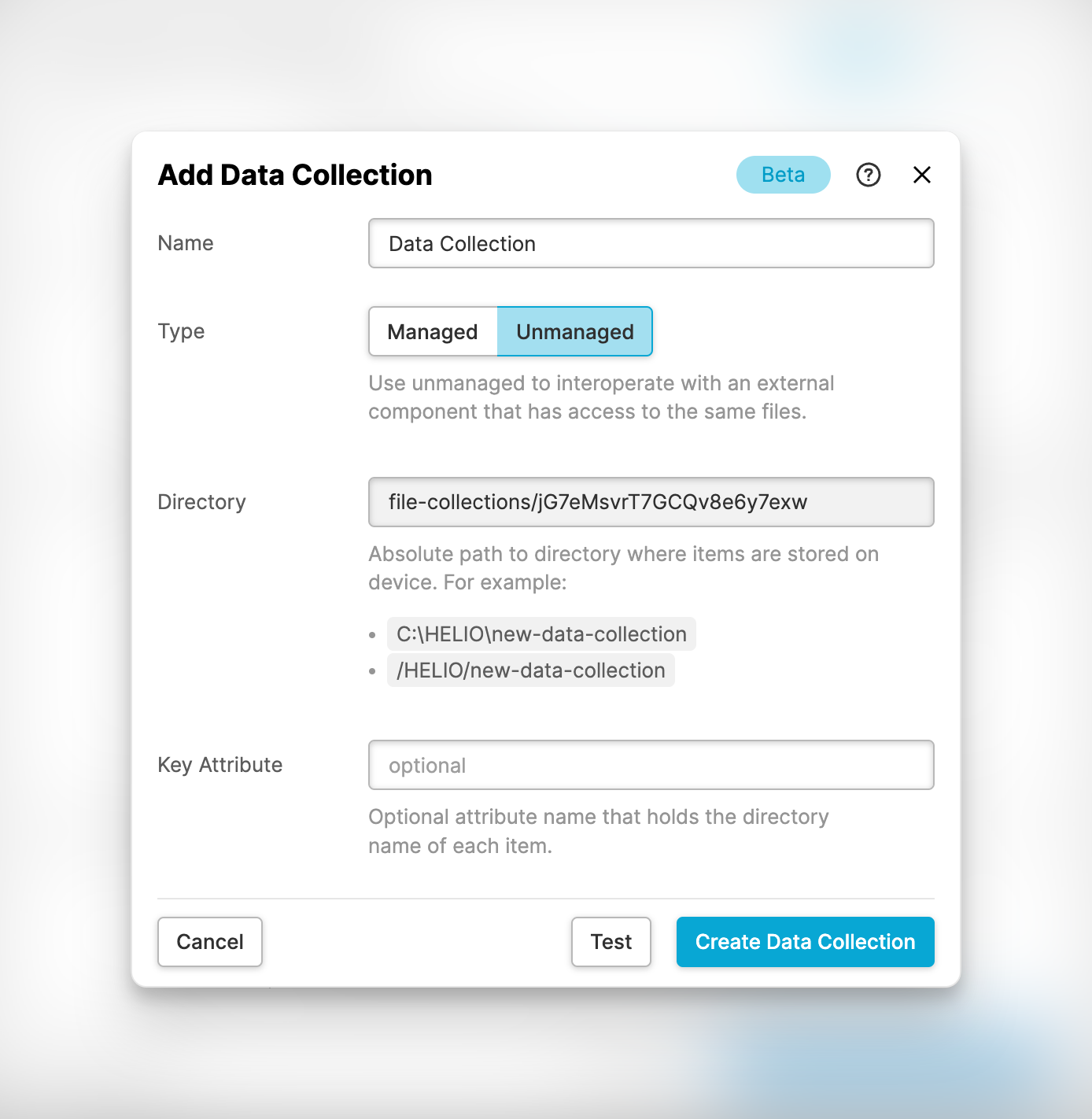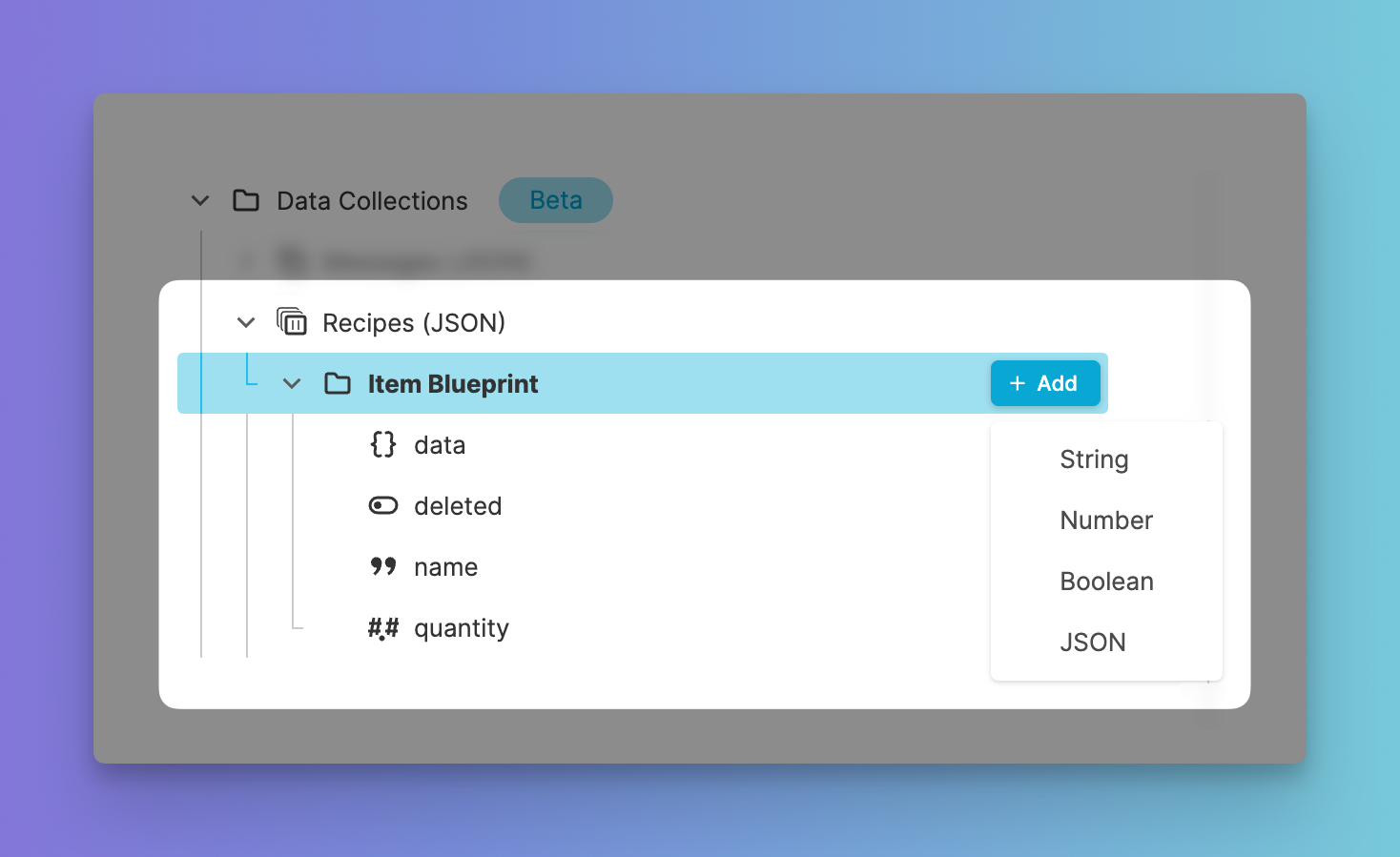Data Collection
[BETA] This Feature Is Currently in Beta!
We’re working hard to shape and tune it by gathering feedback from pilot customers and early adopters.
Got Ideas or Feedback? Let Us Know!
About
HELIO Data Collections are used to store lists of structured data withing your HMI, not on your PLC. This kind of data is often too large to be handled as a whole on your PLC, which is often only interested in specific properties of a collection item.
HELIO uses simple JSON files to store those collections on the device that executes the HELIO Runtime.
Each file and therefore item hast to follow the same schema, be it for recipes, tools, or tasks.
In some cases, other software components may even read, write, and delete files in the same collection. Meanwhile, HELIO monitors changes and notifies all connected HMIs.”
Creating a Data Collection
To create a new Data Collection use the Add button on the Data Collection root folder in the Data Source Explorer of the Data View.
Managed Collections
Managed collections have limitations, but they also relieve you of some decision-making responsibilities. When it comes to managed collections, HELIO will handle tasks such as selecting the storage location and creating an attribute that uniquely identifies each item.
As a result you will not be able to access the unique key of Managed Data Items in your HMI.
Unmanaged Collections
Use unmanaged collections when you need a simple exchange format between HMI and PLC.
The HMI has the capability to create, store, and update items in a designated folder on your target device. After the items are stored, the HMI can trigger the PLC. The PLC, in turn, can load the items as JSON files and commence procedures based on the values they contain. HELIO will then…
- store each collection in one directory.
- add a new folder in this directory for each item in the collection.
- Each folder contains a
data.jsonfile that will store all the data for this item.
Directory
The path where HELIO will store this collection. Can either be…
- a relative path to the Data Directory.
- an absolute path on the operating system HELIO is running on.
Key attribute
Define the name of the attribute that will define the name of the folder.
Defining the Blueprint of Items in Your Data Collection
To define the shape of your items, add variables to your item blueprint.
Please note that you don’t have access to the “normal” Data Variable Types here since you are limited to Data Types supported by JSON.
Importing the Collection as a List Into Your HMI
Once defined, you can use Drag & Drop to import your Data Collection into HMI Data Explorer. This action will create a List in your project that you can now use, for example, to create a Collection Page for your recipes.
If you have created an unmanaged collection and set its Key attribute, for
example, to myCustomId, the blueprint of the imported List will also include
this property.


